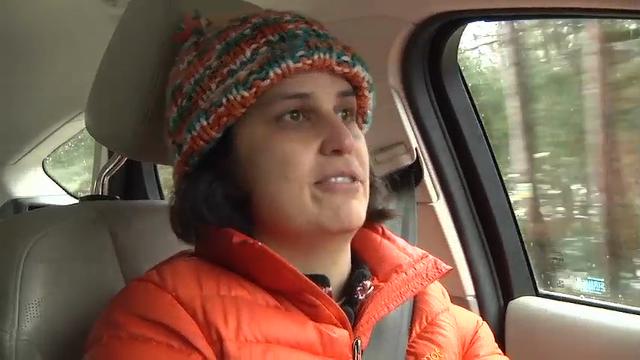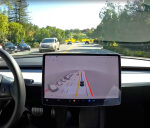In California and New Jersey, there are more than 50 EVs for each available public charging station. As electric vehicles continue to gain market share, will there be enough charging stations?

Before a cross-country trip in her electric car, Nikki Gordon-Bloomfield does her homework.
She studies a pair of apps to determine the best places to recharge her Chevrolet Bolt’s batteries along the way.
She likes stations that are clustered near others to make sure she has options in case one is on the blink. She prefers to charge near interesting restaurants. She’ll call ahead on the route to order takeout meals, then picnic while the car soaks up electrons for the next leg of the journey.
Gordon-Bloomfield said the availability of public-use charging has vastly improved over the past decade as the network gets built out. But with so much recent interest in EVs, the question now is whether there will be enough to go around when hundreds of thousands of new EV converts get behind the wheel for their first road trips.
It could be a close call.
Installation costs are high and utilization overall is low. Business owners who take the plunge and install chargers have to hope that the EV drivers will eventually come.
EV proponents say, however, that far-sighted businesses are seeing the potential and don’t want to be left behind. The effort is also getting a huge boost from the $7.5 billion that the Biden administration tucked into its infrastructure bill for up to 500,000 new chargers, including many in rural areas lack of a place to a power up could be more than an inconvenience.
►Extraordinarily frustrated: Renters can find no place to plug in electric vehicles
An EV turning point
The charger installation boom is a bet on the EV future.
After humping along for the past few years, EV sales are finally surging. They doubled last year compared to the previous year and dealers say they can’t get enough of them to meet demand. Their market share, which has been running at 4% of new car sales, is expected to continue to grow.
And despite ominous economic signs, there’s no indication demand will soften. Nearly every major automaker – and some new startups – is promoting new long-range electric models with some reporting years-long waiting lists.
General Motors promises its lineup will be composed of only zero-emission vehicles by 2035.
One expert says a massive installation wave is underway.
“Right now, it’s the wild, wild west,” said Loren McDonald of EVAdoption, which analyzes EV and charging trends.
So many new installations are going in, McDonald said, that he’s concerned that EV drivers may get lost in the mix.
“Everyone is trying to get chargers in the ground but nobody has been focused on the customer experience,” such as whether they are maintained and not off-line, he said.
Long waits
Tesla, which was early and has set a standard for interstate charging with its Supercharger network, has experienced the growing pains.
Some Tesla owners have reported long waits at the automaker’s high-speed recharging locations. That’s an ominous sign given that Tesla is leading the EV revolution. Seven out of 10 electric vehicles on the road are Teslas, Experian Automotive found.
Congestion issues, meanwhile, haven’t been as big a factor at other charging networks.
For the most part, there are enough chargers to go around as seen by low utilization rates, McDonald said. Many are being used as little as 5% of the time in a day – meaning only one or two charging sessions. Some locations, of course, are more popular than others.
Billions more for chargers
With sales of EVs expected to double every couple of years, 40 million EVs could be on the road by the end of 2030, McDonald forecasts. If enough public chargers aren’t available, that could sour EV buyers.
To foster the move to EVs, the Department of Transportation is to creating a network with the goal of having at least one charging station that can accommodate up to four EVs at a time every 50 miles along major highways. They would be required to be no more than a mile off the road.
At the same time, a host of private charging companies continue to install more stations in anticipation of the wave that’s coming.
►Electric vehicles surging in the South: How car sales, jobs, investments are driving momentum
One, for instance, is Electrify America, created and funded by Volkswagen in the wake of a scandal in which it was caught in a scheme to cover up emissions from its diesel-powered cars. Electrify America that says it is investing $2 billion to install 10,000 chargers in the U.S. and Canada over 10 years.
Another is ChargePoint, which says it has more than 174,000 chargers.
In seeking to grow, charging companies are forming alliances with automakers and seeking out roadside businesses that see charging as a way to pull new business from affluent EV-driving customers who will have more time to kill while the vehicles recharge.
So, for instance, ChargePoint recently signed a deal in which Volvo-branded chargers will be put at up to 15 Starbucks locations on a 1,350-mile route from Seattle to Denver.
ChargePoint is “really recasting what a road trip looks like and what it means to make a stop along the way to refuel,” said Colleen Jansen, the chief marketing officer. “We’re seeing all kinds of businesses that are expressing interest in charging solutions.”
It could be office complexes, hospitals, shopping centers or trucking companies or transit operators that want to electrify their fleets.
What’s to become of gas stations?
Then there are gas stations, which would se




